Related Research Articles

A CT scan or computed tomography scan is a medical imaging technique used in radiology to get detailed images of the body noninvasively for diagnostic purposes. The personnel that perform CT scans are called radiographers or radiology technologists.

Radiography is an imaging technique using X-rays, gamma rays, or similar ionizing radiation and non-ionizing radiation to view the internal form of an object. Applications of radiography include medical radiography and industrial radiography. Similar techniques are used in airport security. To create an image in conventional radiography, a beam of X-rays is produced by an X-ray generator and is projected toward the object. A certain amount of the X-rays or other radiation is absorbed by the object, dependent on the object's density and structural composition. The X-rays that pass through the object are captured behind the object by a detector. The generation of flat two dimensional images by this technique is called projectional radiography. In computed tomography an X-ray source and its associated detectors rotate around the subject which itself moves through the conical X-ray beam produced. Any given point within the subject is crossed from many directions by many different beams at different times. Information regarding attenuation of these beams is collated and subjected to computation to generate two dimensional images in three planes which can be further processed to produce a three dimensional image.
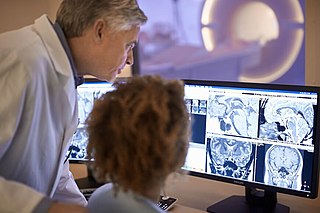
Radiology is the medical discipline that uses medical imaging to diagnose and treat diseases within the bodies of animals and humans.

Elias Zerhouni is an Algerian-born American scientist, radiologist and biomedical engineer.
Willi A. Kalender is a German Medical Physicist and Professor and former Chairman of the Institute of Medical Physics of the University of Erlangen-Nuremberg. Kalender has produced several new technologies in the field of diagnostic radiology imaging.
Abass Alavi is an Iranian-American physician-scientist specializing in the field of molecular imaging, most notably in the imaging modality of positron emission tomography (PET). In August 1976, he was part of the team that performed the first human PET studies of the brain and whole body using the radiotracer [18F]Fluorodeoxyglucose (FDG). Alavi holds the position of Professor of Radiology and Neurology, as well as Director of Research Education in the Department of Radiology at the University of Pennsylvania. Over a career spanning five decades, he has amassed over 2,300 publications and 60,000 citations, earning an h-index of 125 and placing his publication record in the top percentile of scientists.
In medicine, the Golden S sign is a sign seen on imaging of the chest that suggests a central lung mass or lung collapse. It was first described by Dr. Ross Golden (1889-1975) in 1925 in association with bronchial carcinoma, but it is also seen in metastatic cancer, enlarged lymph nodes, and collapse of the right upper lobe of the lung.
Cone beam computed tomography is a medical imaging technique consisting of X-ray computed tomography where the X-rays are divergent, forming a cone.
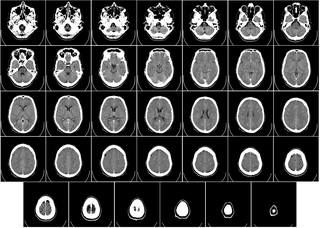
Computed tomography of the head uses a series of X-rays in a CT scan of the head taken from many different directions; the resulting data is transformed into a series of cross sections of the brain using a computer program. CT images of the head are used to investigate and diagnose brain injuries and other neurological conditions, as well as other conditions involving the skull or sinuses.; it used to guide some brain surgery procedures as well. CT scans expose the person getting them to ionizing radiation which has a risk of eventually causing cancer; some people have allergic reactions to contrast agents that are used in some CT procedures.
Richard L. Wahl, a nuclear medicine physician, is the Elizabeth Mallinckrodt Professor and Chairman of Radiology, and Director of the Mallinckrodt Institute of Radiology at Washington University School of Medicine. He is known for his work in PET/CT imaging.

Stuart Meeson is a physicist who having done research in Electrical Impedance Tomography and Mammography has been working in Computed Tomography (CT) with the Radiology Group of the University of Oxford. Areas of particular interest include imaging the cervical spine, abdominal sepsis and low contrast features in the abdomen and liver. His work in CT led to a collaborative study with the UK Health Protection Agency on the Third UK national CT dose survey.

Sanjiv Sam Gambhir was an American physician-scientist. He was the Virginia and D.K. Ludwig Professor in Cancer Research, Chairman of the Department of Radiology at Stanford University School of Medicine, and a professor by courtesy in the departments of Bioengineering and Materials Science and Engineering at Stanford University. Additionally, he served as the Director of the Molecular Imaging Program at Stanford (MIPS), Canary Center at Stanford for Cancer Early Detection and the Precision Health and Integrated Diagnostics Center (PHIND). He authored 680 publications and had over 40 patents pending or granted. His work was featured on the cover of over 25 journals including the Nature Series, Science, and Science Translational Medicine. He was on the editorial board of several journals including Nano Letters, Nature Clinical Practice Oncology, and Science Translational Medicine. He was founder/co-founder of several biotechnology companies and also served on the scientific advisory board of multiple companies. He mentored over 150 post-doctoral fellows and graduate students from over a dozen disciplines. He was known for his work in molecular imaging of living subjects and early cancer detection.
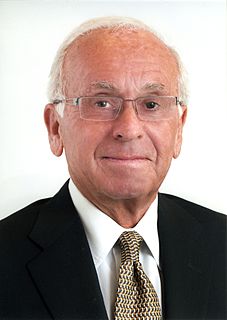
Ronald J. Ross is a Cleveland, Ohio radiologist known for research on brain injury in professional and amateur boxers and for the first clinical use of nuclear magnetic resonance imaging on human patients. Ross is also credited with the first use of head and whole body computed tomography imaging (CT) in a private clinical setting in the United States.
Sudarshan Kumar Aggarwal is an Indian medical doctor and radiologist. He was honoured by the Government of India, in 2013, by bestowing on him the Padma Shri, the fourth highest civilian award, for his contributions to the field of medicine.
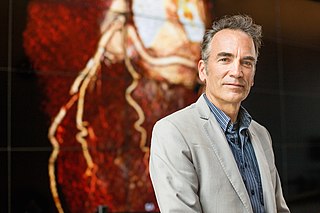
Elliot R. McVeigh is a Professor of Bioengineering, Medicine and Radiology at the University of California, San Diego (UCSD). His research utilises low dose CT imaging and MR imaging techniques to identify those people at substantially higher risk for heart attacks.
Jeffrey Harold Siewerdsen is an American physicist and biomedical engineer who is a Professor of Biomedical Engineering, Computer Science, Radiology, and Neurosurgery at Johns Hopkins University. He is Co-Director of the Carnegie Center for Surgical Innovation at Johns Hopkins School of Medicine and is a member of the Malone Center for Engineering in Healthcare. He is among the original inventors of cone-beam CT-guided radiotherapy as well as weight-bearing cone-beam CT for musculoskeletal radiology and orthopedic surgery. His work also includes the early development of flat-panel detectors on mobile C-arms for intraoperative cone-beam CT in image-guided surgery. He developed early models for the signal and noise performance of flat-panel detectors and later extended such analysis to dual-energy imaging and 3D imaging performance in cone-beam CT. His core laboratory at Johns Hopkins University is the ISTAR Lab in the Department of Biomedical Engineering at the Johns Hopkins Hospital.

Alan Yuille is a Bloomberg Distinguished Professor of Computational Cognitive Science with appointments in the departments of Cognitive Science and Computer Science at Johns Hopkins University. Yuille develops models of vision and cognition for computers, intended for creating artificial vision systems. He studied under Stephen Hawking at Cambridge University on a PhD in theoretical physics, which he completed in 1981.

Cheri L. Canon, M.D., is an abdominal radiologist at the University of Alabama at Birmingham (UAB) Department of Radiology. She currently serves as a professor and as the Witten-Stanley Endowed Chair of Radiology in the department of radiology at UAB.
Judy Yee is an American radiologist. She is the University Chair of Radiology at Montefiore and Professor of Radiology at Albert Einstein College of Medicine.
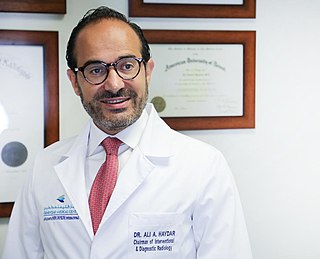
Ali A Haydar is Lebanese physician who is an Emeritus Professor at the American University of Beirut and is the Chief Medical Officer at Aman Hospital, Doha, Qatar and previously the Chairman of radiology at the Clemenceau Medical Center affiliated with Johns Hopkins International since 2018. He is also a member of the Radiological Society of North America, British society of Interventional and Cardiovascular Radiology and the Cardiovascular and Interventional Radiological Society of Europe and fellow of the Pan Arab Interventional radiology society.
References
| Scholia has a profile for Elliot K. Fishman (Q56523823). |
- ↑ "Elliot K Fishman, M.D."
- ↑ "About Dr. Elliot K. Fishman".
- ↑ "About Dr. Elliot K. Fishman".
- ↑ "About Us".
- ↑ "Dr. Elliot Fishman Receives Radiology Lifetime Achievement Award From Diagnostic Imaging".
- ↑ "Johns Hopkins Wins 4 Minnie Awards".
- ↑ "Honored Educator Award".
- ↑ "Elliot K. Fishman, M.D. Professorship in Radiology".
- ↑ "Elliot K Fishman, M.D."
- ↑ "CTisus".